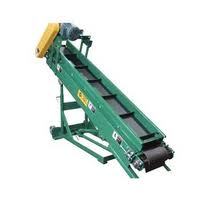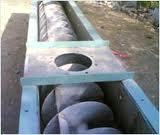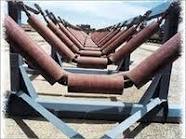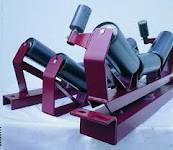Call: 08071931936

Fresh Air Dampers
12500 INR/Number
Product Details:
- Power Source Manual
- Application Ventilation, HVAC Systems, Air Handling Units
- Bearing Type Nylon Bush / Brass Bush
- Features Corrosion resistance, Precise control of airflow, Robust construction, Easy installation
- Diameter Customized as per requirement
- Mounting Type Wall / Duct Mounted
- Material Galvanized Iron / Aluminum
- Click to View more
X
Fresh Air Dampers Price And Quantity
- 1 , , Meter
- 12500 INR/Number
Fresh Air Dampers Product Specifications
- Customized as per requirement
- Corrosion resistance, Precise control of airflow, Robust construction, Easy installation
- Wall / Duct Mounted
- Galvanized Iron / Aluminum
- Manual
- Ventilation, HVAC Systems, Air Handling Units
- Nylon Bush / Brass Bush
Product Description
We offer a broad array of supreme quality Fresh Air Dampers to our clients. These dampers are precisely manufactured with the utilization of premium quality raw materials and the latest techniques at our technologically advanced manufacturing unit. For controlling the flow of air, offered dampers are majorly used in food processing chemical, cosmetic, pharmaceutical and petrochemical industries. Moreover, these Fresh Air Dampers can be availed from us in diverse technical specifications within committed time frame.
Features:
- Highly efficient
- Simple operation
- High performance
- Robust construction
Product details
| Type | Motorized / Pneumatic / Manual |
| Size | 100mm to 3000mm |
| Model | Butterfly Dampers |
| Brand | Star Material |
| Material | Mild Steel, Stainless steel |
Premium Construction and Versatility
Our fresh air dampers are crafted from durable galvanized iron or aluminum and finished with either a powder coating or mill finish to ensure high corrosion resistance. With standard and custom frame depths and a wide range of sizes, these dampers fit seamlessly into wall or duct mounting, catering to both indoor and outdoor installations. Their robust build guarantees longevity and reliability.
Precise Airflow Regulation Features
Choose between parallel and opposed blade types, both offering efficient control of airflow with minimal leakage thanks to our advanced design. The option for manual lever operation or motorized control adds flexibility, allowing precise adjustment for optimal ventilation performance in HVAC systems and air handling units.
Wide-ranging Applications and Customization
Suited for ventilation, HVAC systems, and air handling units, our dampers accommodate customized diameters and specialized fittings. Nylon or brass bush bearings enhance smooth operation, while the corrosion-resistant materials ensure dependable service in even challenging environments. Our products are trusted across India as we serve as exporter, manufacturer, supplier, and trader.
FAQs of Fresh Air Dampers:
Q: How do I select the appropriate blade type for my fresh air damper application?
A: The choice between parallel and opposed blade types depends on the desired airflow characteristics. Parallel blades are ideal for quick on/off control and larger openings, while opposed blades offer more precise and even regulation of airflow. Consider your HVAC systems pressure requirements and airflow patterns before selecting.Q: What finishes are available for these fresh air dampers, and how do they enhance performance?
A: We provide powder-coated and mill finishes for our dampers. Powder coating significantly improves corrosion resistance, making it suitable for harsh environments, while mill finish offers a clean, untreated metallic look suitable for less demanding conditions.Q: When should I opt for motorized control over manual lever operation?
A: Motorized damper control is beneficial in systems where automated or remote adjustment is required, such as large HVAC systems or locations inaccessible for manual operation. Manual lever operation suffices in simpler, accessible installations with infrequent adjustment needs.Q: Where can these dampers be installed within a ventilation system?
A: Our fresh air dampers are engineered for both wall and duct mounting, making them suitable for installation in ventilation, HVAC systems, and air handling units for indoor or outdoor environments. Their flexible sizing ensures a fit for diverse architectural and industrial setups.Q: What is the process for customizing size or diameter for a specific project?
A: To obtain a custom size or diameter, provide your precise measurements and system requirements. Our team will review the specifications and manufacture the dampers to fit your unique application, ensuring proper integration and optimal airflow control.Q: How does the low leakage design of these dampers benefit HVAC systems?
A: Low leakage dampers ensure that unwanted air bypass is minimized, which improves overall system efficiency, helps maintain specified air pressures, and contributes to energy cost savings by preventing air loss from the ventilation ductwork.Tell us about your requirement

Price:
Quantity
Select Unit
- 50
- 100
- 200
- 250
- 500
- 1000+
Additional detail
Mobile number
Email

 Send Inquiry
Send Inquiry




